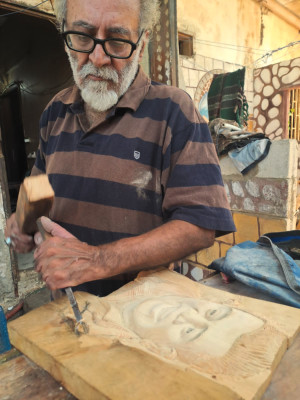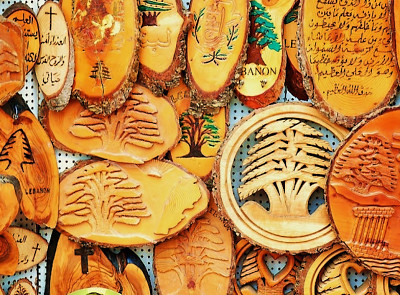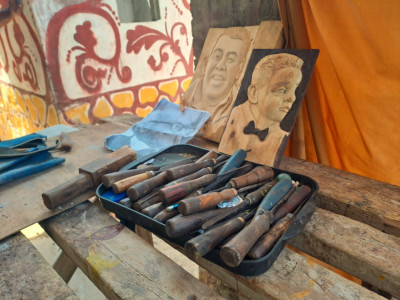Wood carving

The know-how of “wood carving” is based on qualities of the craftsman such as technicality and creativity.
When it comes to the working mechanism of wood engraving and how to turn pieces of wood into finished products, quality plays an important role in the process of choosing the right wood, such as walnut, poplar, sorbet, olive, sandalwood, juniper, cypress and pine. The wood is processed during sawing by mechanical means after drying and separation according to demand, then the engraving process begins in stages. The carpenter begins by drawing the “picture”, the “rose” or the “flower” on parchment paper or directly on wood. He then attaches it to a “stand” so that he can work with comfort and stability on the piece of wood. The latter is greased with diesel and fixed with a vice. The carpenter then sharpens the tools. Around a hundred chisels are used, each specializing in a particular type of engraving. The chisel is struck either with a wood hammer or by hand depending on the precision of the shape to be engraved. A foundation chisel called the “incision” is used on the design to initially engrave it. The holes are then deepened based on shape and thickness with specific types of chisels. Engraving time varies from a day to a week or more. Each drawing, its complexity and finesse, dictates the timing necessary to complete the drawing. In some cases, to insert mother-of-pearl, its location is emptied, after which it can be glued to the wooden piece. The sculpture is rubbed by a specialist to smooth it, and then it goes to the painting stage. It takes several months to carve a single piece to complete a masterpiece of a wonderfully crafted work of art. Among the things made of carved wood are benches, chairs, boxes, and musical instruments, such as the oud, tambourine, drum, and tables.
Historically, engraving was done to decorate edges and parts of furnishings. The number of customers for the furniture of wood carving has declined due to economic crises, as well as high prices for wood used for carving and shelling. Consequently, the number of people working in “craft” has declined.
 To survive, some carpenters, no longer able to engrave furniture, turned to carving names, faces, landscapes, shields of appreciation or wooden products representing Lebanese heritage, such as cedar, the temple of Baalbek and the map of Lebanon. They join the souvenir sculptors of the Cedars of Becharreh and Tyre.This new direction paved the way for women to begin practicing woodcutting.
To survive, some carpenters, no longer able to engrave furniture, turned to carving names, faces, landscapes, shields of appreciation or wooden products representing Lebanese heritage, such as cedar, the temple of Baalbek and the map of Lebanon. They join the souvenir sculptors of the Cedars of Becharreh and Tyre.This new direction paved the way for women to begin practicing woodcutting.


